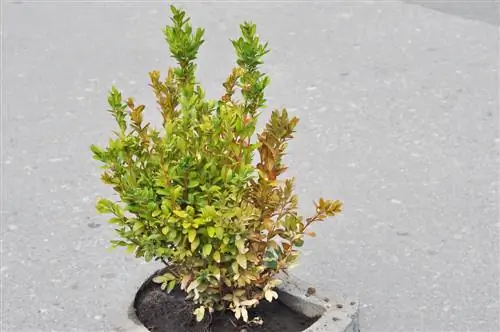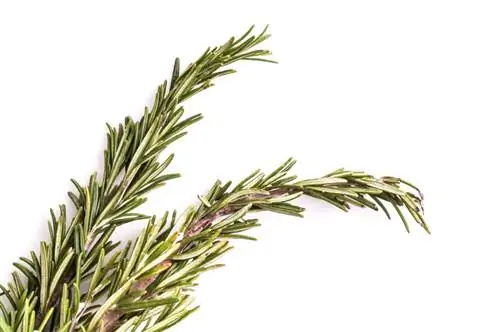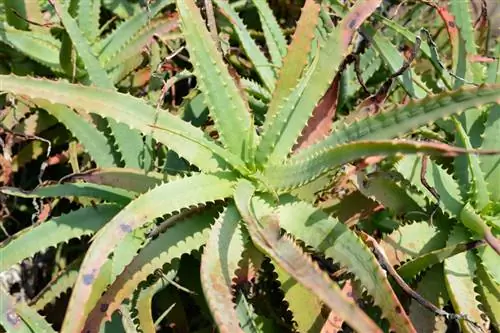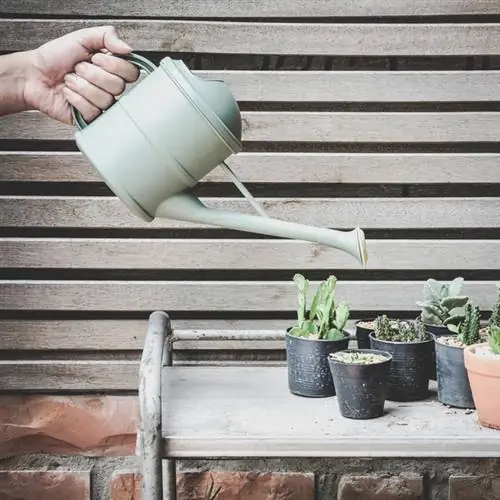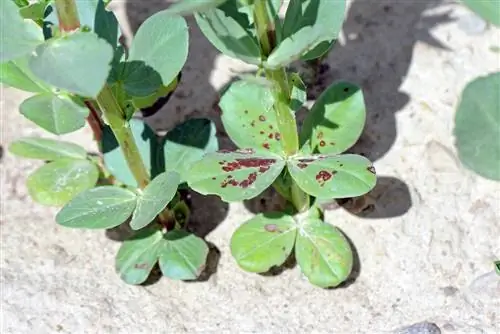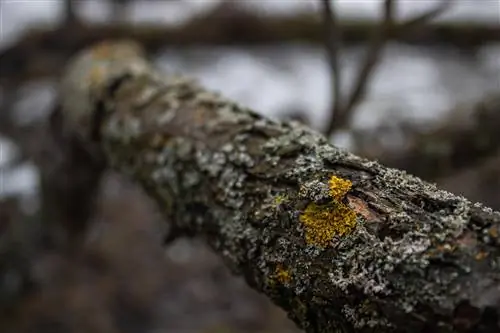- Author admin [email protected].
- Public 2023-12-16 16:46.
- Last modified 2025-06-01 06:02.
Thanks to its versatility, boxwood can be found in almost every garden. However, it is also a very sensitive plant that reacts just as quickly to sub-optimal environmental conditions as it does to fungal or pest infestation. Brown spots on the leaves and shoots occur quite often and have very different causes.
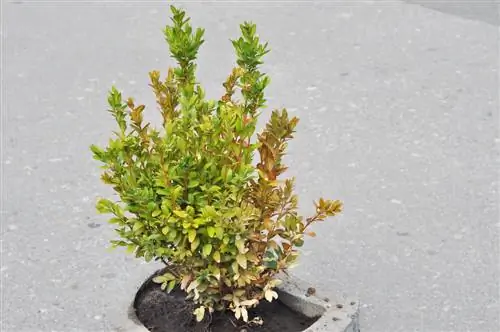
What causes brown spots on boxwood?
Brown spots on boxwood trees can indicate sunburn, pest infestation or fungal diseases. For targeted treatment, you should identify the exact cause, cut back the affected area and, if necessary, adjust the location or care of the plant.
Causes of brown spots on leaves and shoots
If you discover such spots, you don't have to immediately think about the dreaded boxwood dieback. There are many other causes that are far less threatening. Cold weather, for example, causes yellow leaves because the plant is trying to protect itself from freezing temperatures. In this case it will turn green again on its own. We have put together further causes for you in the following overview.
Sunny location
If your book is in the blazing sun, the leaf spots indicate simple sunburn. Incidentally, these specimens are particularly threatened by drying out and a lack of nutrients, which is always a consequence of the lack of water. Replant the plagued boxwood to a more suitable location and ensure there is sufficient - not excessive! - Supply of water and nutrients.
Pest Infestation
Furthermore, some pests initially cause leaf spots even before they become clearly visible. If spider mites have settled, this will initially be evident by yellowish mottling on the leaves. Only later do they turn brown and fall off. The gall midges that are often found on box trees also cause similar damage. Here, however, the typical gall bubbles form on the underside of the leaf.
Fungal diseases
Last but not least, of course, some fungal diseases cause leaf spots. The dreaded boxwood shoot dieback, for example, is evident in its early stages in the characteristic orange to brown spots on the leaves. Soon afterwards they fall off and the shoots die off. If, on the other hand, red-brown, bumpy spots appear, it is boxwood rust. The white fungal patches on the underside of the leaves are also typical here.
What to do if you have an acute fungal infection?
If you have an acute fungal illness, you should act as quickly as possible to limit the damage. These measures are essential:
- strong pruning down to he althy wood
- Never dispose of clippings in the compost or leave them lying around
- dispose of in household waste or burn instead
- rake up and dispose of fallen leaves lying on the ground
- Carefully disinfect cutting tools before and after cutting
Tip
If boxwood shoots have died in one location, no boxwoods should be planted there for several years. The fungal spores survive in the soil for a very long time, so only replacing the soil can provide relief.

